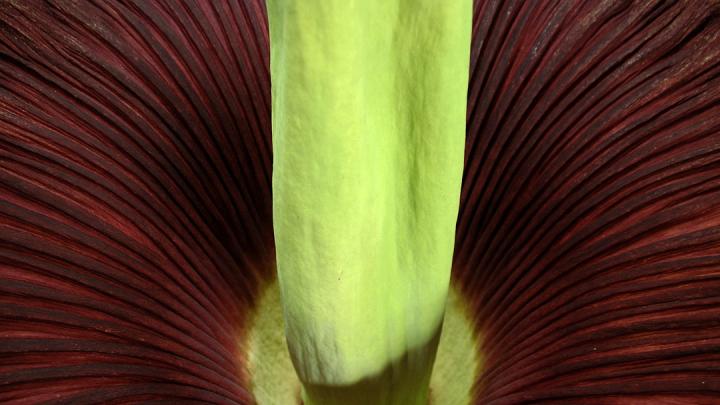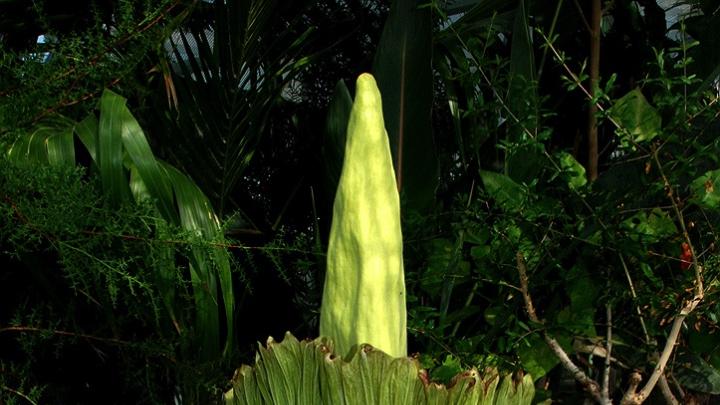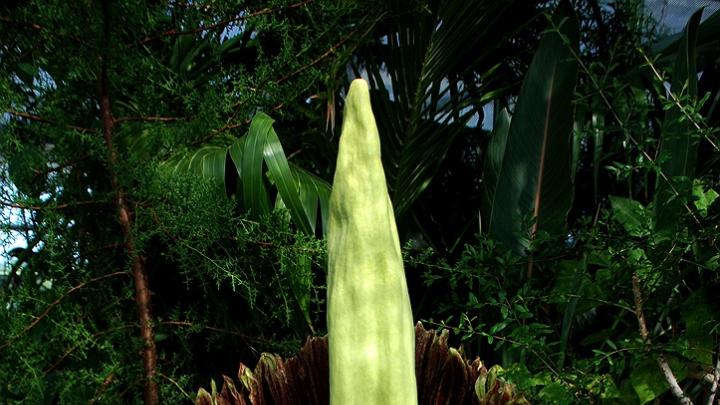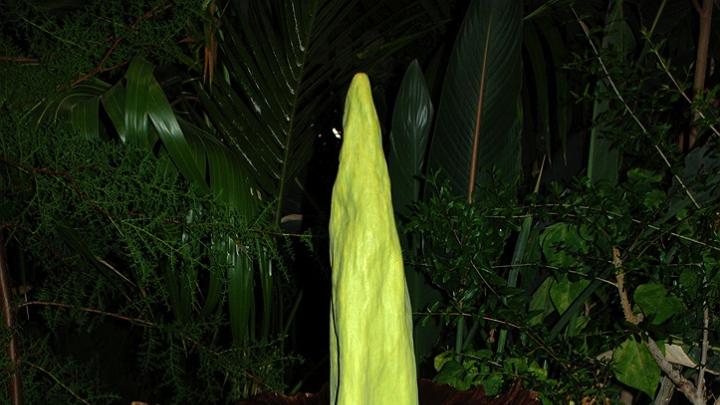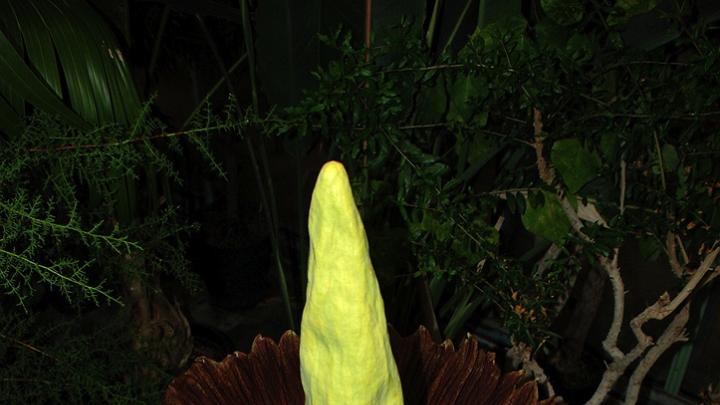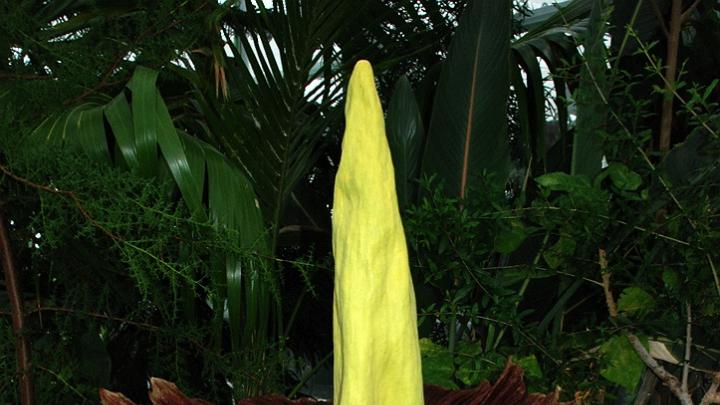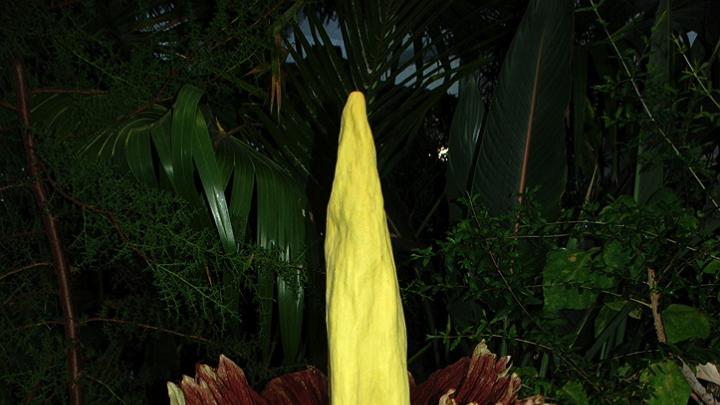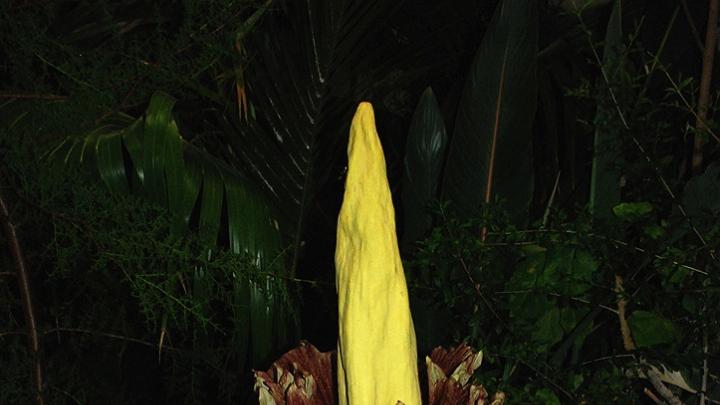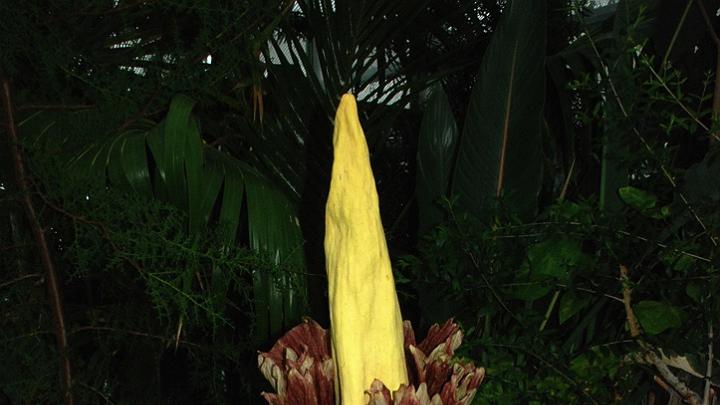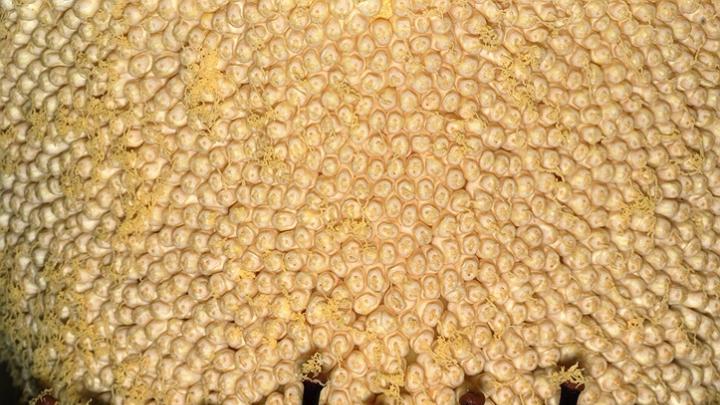The University's very own Amorphophallus titanum flourished and faded in little more than 24 hours, between early Sunday afternoon, July 11, and early evening Monday, July 12. Doug Goldman, the Harvard University Herbaria research associate whose photographs show the plant’s progress, shared a brief background report with this magazine.
At 9 a.m. Sunday it was still closed, but several of us noticed it partly opened at 4 p.m., so we suspect it began to open around noon. It unfurled its single petal-like bract until it was in its full glory late that night: someone who works on the third floor of the Biolabs building told me that he could smell it all the way down there—three floors below!—at around midnight. (Like the related skunk cabbage, which bears tiny inflorescences that produce enough heat to melt their way up through the snow in spring, the titan arum has a tall, central stalk—the spadix—that produces some heat, helping to release its infamous odor.) When fully open it was four feet tall (excluding the pot) and nearly three feet wide. By Monday morning it had already begun to close up, but it was still smelly that afternoon. I expect it will be fully closed by sometime Tuesday. In the next day or two I'll cut it down and make a herbarium specimen out of it. But the corm in the soil will remain in its pot to live happily ever after, producing leaves and maybe flowers in years to come.
How did the titan arum come to Harvard? Its seeds were collected in the wild in Sumatra in the early 1990s by the late James Symon, a California physician fascinated by this genus. Several seeds found their way to the University of Connecticut, where they were germinated in 1995. In 2002, UConn gave a large seedling to Harvard at the request of the then greenhouse manager, Richard Stomberg. Goldman acted as the delivery boy, and recalls suggesting to the greenhouse coordinator for plant sciences, Janet Sherwood, that the young titan arum could grow far too large for the greenhouse: a full-sized plant can produce a leaf of 12 to 15 feet, and an inflorescence eight to nine feet tall. At his suggestion, Sherwood has for years kept the specimen in much smaller pots than the three- to four-foot-diameter containers that would normally be used, thereby limiting the nutrients available to it through the smaller amount of soil, which causes it to grow more slowly and be smaller. (It has been fertilized occasionally as well.)
Goldman never thought the titan arum would flower under such conditions, and is delighted to have been proved wrong. He notes that it took the plant 15 years to become mature—considerably longer than normal—and he doesn’t expect it to flower again for at least five years. In mid June, he points out, the plant was still dormant: its pot appeared to be full of dirt, but otherwise empty. Then, using all the energy stored in its corm and water from the soil, it produced its massive inflorescence in roughly three weeks (which is normal for the species). Because the plant is very small for its species, he has decided not to pollinate it manually; he explains that inflorescence and fruit formation depend on stored energy reserves in the corm, so pollinating it in an effort to produce fruit might kill it or severely weaken it. “The undersized corm will be quite exhausted of nutrients. It needs a break!” he says. “It will probably put up a leaf in the fall or winter, which will be between six and eight feet tall. The titan arum becomes something of a metabolic machine in overdrive through this whole flowering process. No wonder these things need a rest afterwards!”
A postscript from Doug Goldman, July 14, 10:30 p.m.
The plant is pressed now, which was a major effort, taking me more than five hours to dissect it, photograph parts of it, and get it pressed and in a drier cabinet. I weighed the inflorescence just after I cut it and it was nearly eight pounds, but I suspect it was between 10 and 15 pounds when it was in top form on the night of the 11th. There's a bit more work to do with the pressed specimen to get it into the herbarium here, but otherwise this arum adventure has come to an end, at least for now.
